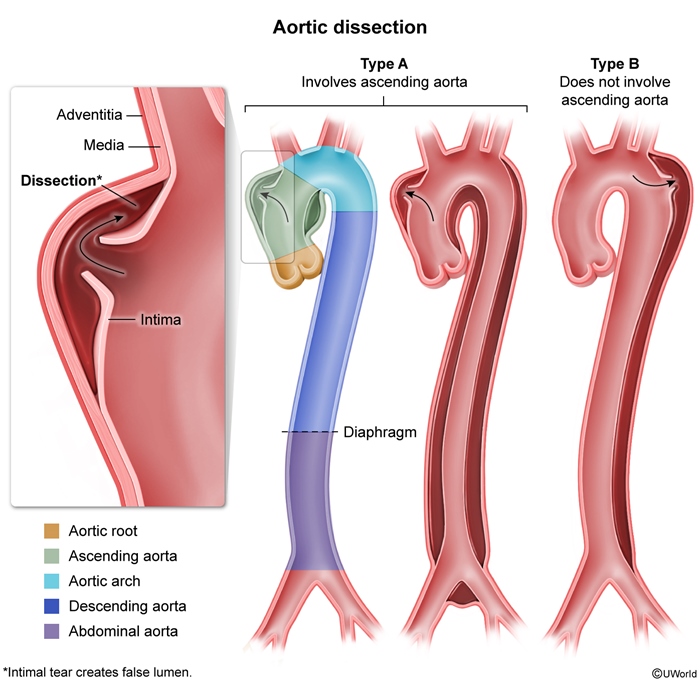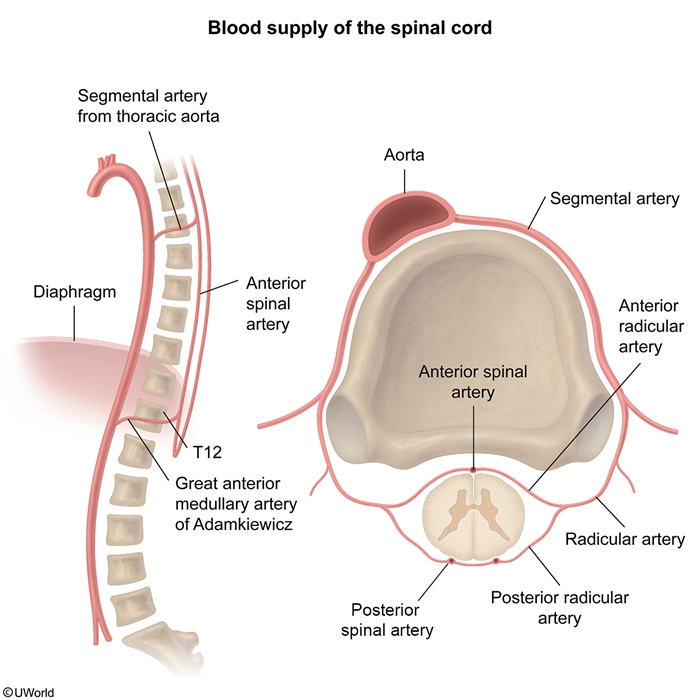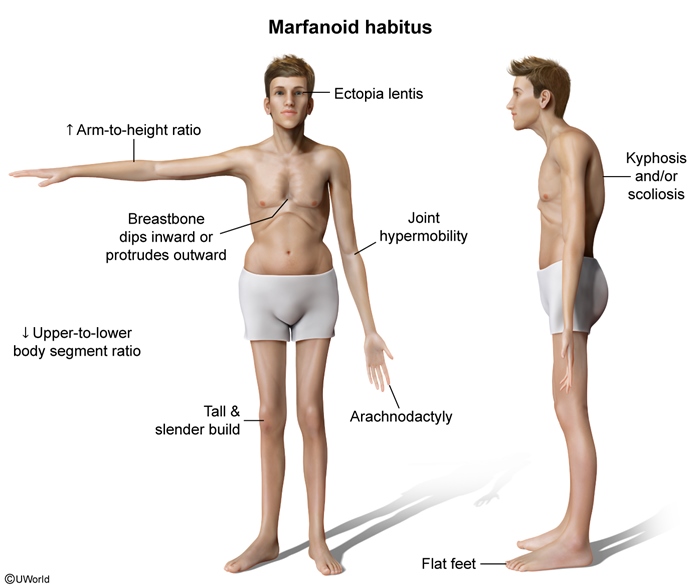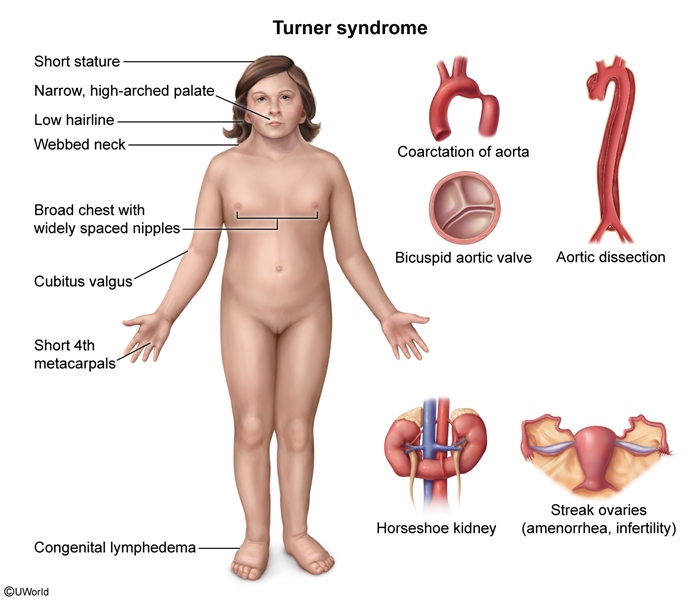Aortic Dissection
Article Sections
Introduction
Aortic dissection results from a tear in the arterial intima that allows high-pressure blood to enter the layers of the aortic wall, causing dissection of the wall and creating a false aortic lumen. Propagation can cause life-threatening complications due to extension into nearby structures and disruption of blood flow to vital organs. The aortic wall can also rupture entirely, causing catastrophic hemorrhage. Ascending aortic dissection carries a mortality rate of 1%-2% per hour following symptom onset; it requires prompt recognition and management to prevent death or serious complications.
Pathophysiology
Cystic medial degeneration (or cystic medial necrosis) is likely the most important factor that encourages aortic dissection. The aortic wall has 3 layers: the inner tunica intima, the mid-layer tunica media, and the outer tunica adventitia. The
Continue Learning with UWorld
Get the full Aortic Dissection article plus rich visuals, real-world cases, and in-depth insights from medical experts, all available through the UWorld Medical Library.
Figures



